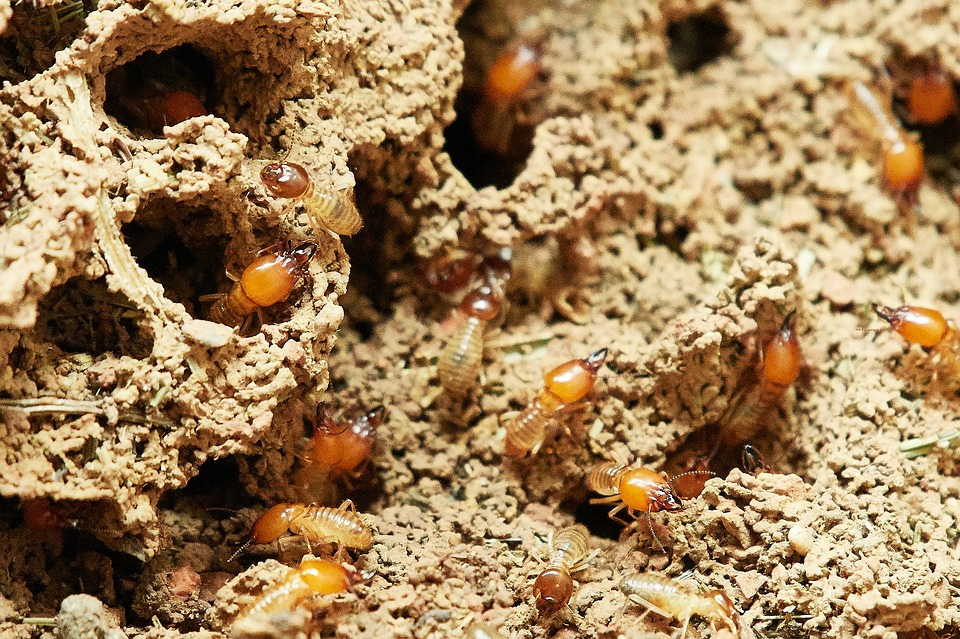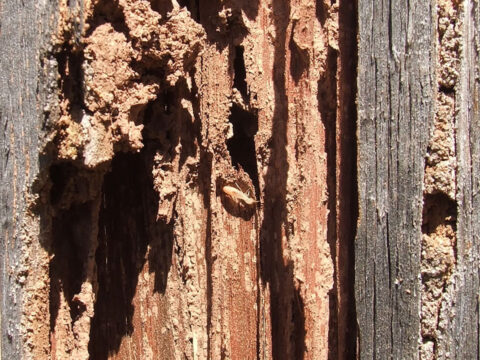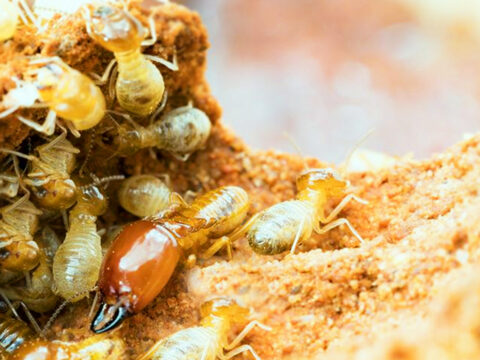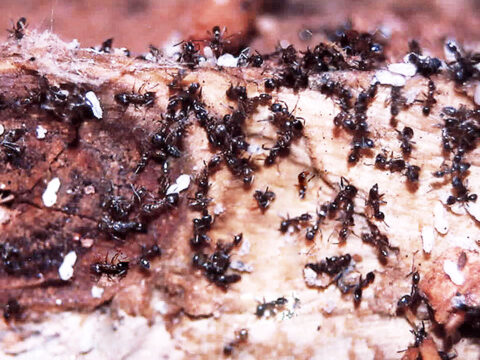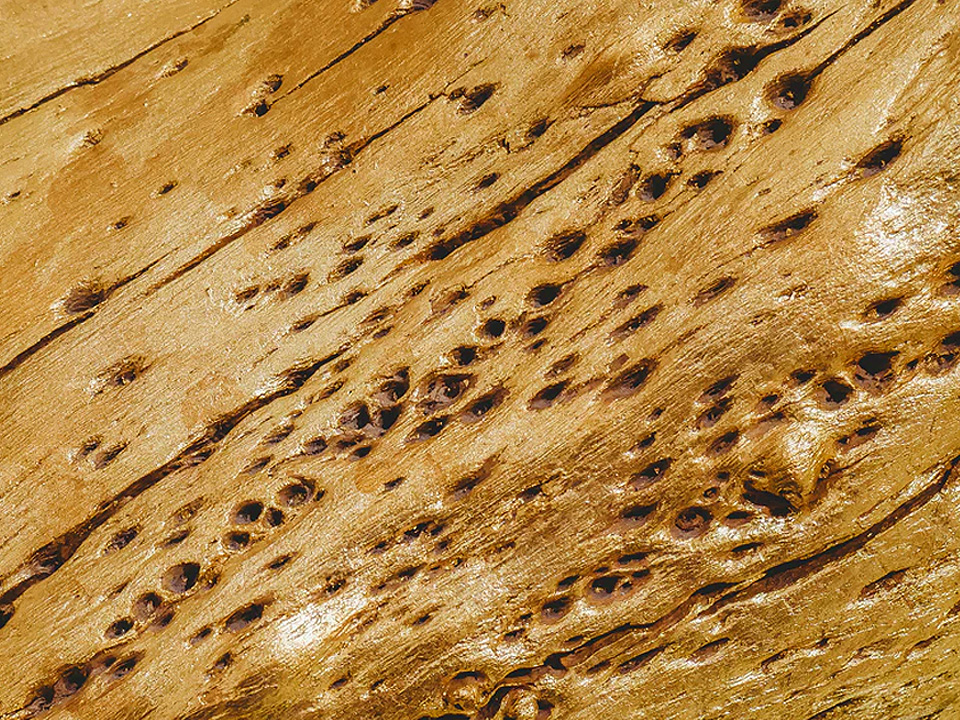
Do Termites Make Pinholes In Your Home?
September 16, 2021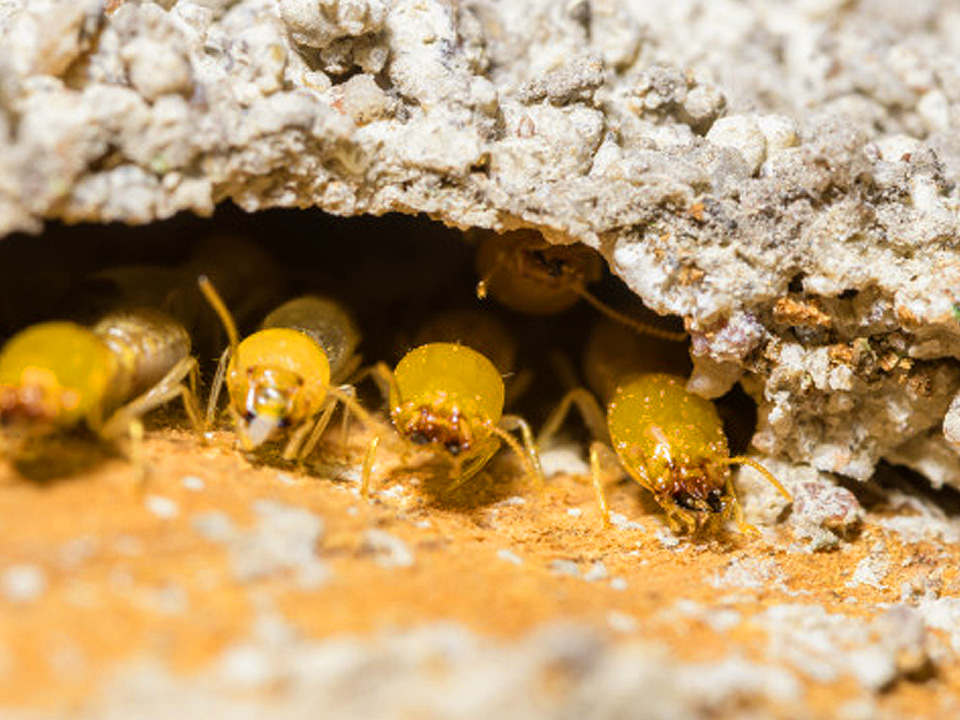
Can Termites Get In Your Bed?
November 18, 2021Termites live in an environment where it is dark, moist, and warm. They cannot survive in direct sunlight, so if their nest is opened or destroyed, they will start crawling back, looking for darkness. Termites are cold-blooded insects, so they cannot thrive in a situation in which the outside temperature fluctuates greatly and reaches extremes. Once exposed to extreme heat, most termites will die quickly enough.
Also, termites need moisture for survival and will therefore die soon if their nest dries out after being exposed to the sun. Exposure to sunlight will result in the evaporation of moisture from their nesting areas. In some cases, their nests are very moist because water will leach inside from the humidity and condensation. This accumulated moisture will allow the termites to survive in dry conditions, but only for a short time.
Their tunnels allow them to remain “underground” while traveling and they protect these pests from the elements. Thus, when worker termites get exposed to air and daylight, they will die quickly. For this reason, they will leave the outer surfaces of the wood intact so as not to expose themselves to the elements.
Research has shown that subterranean termites have developed a system to enable them to detect changes in the surface temperature, even while staying deep underground. This way, they can sense the shadows of structures, objects, and vegetation, and they will create tunnels under the ground wherever they find a suitable shade. Knowing exactly where your house is above the surface, they can burrow inside its cool foundations or basement walls. They will then come up to feed, eating through all the wood in your house!
On the other hand, drywood termites don’t tunnel underground, but they will still manage to find a way to beat the heat as well. All they can do is tunnel deeper into the wood they are eating, and use the outside of the beam or log to protect them from the sun and daylight. Drywood termites can’t burrow their way straight into your house. However, if there are piles of wood such as firewood in your backyard or wooden patio furniture, they can easily make them their new nesting and feeding site or can travel to your house that way. These termites will burrow deep inside the wood in your home for protection, and unfortunately, it will be too late before you notice any serious damage.
In general, when it comes to killing non-winged termites, direct contact with open, fresh air and the sun for only a few minutes will cause them to die. This is the reason why homeowners sometimes wonder if this means that termites are not that harmful, as all those that come out when you uncover their nest, die off quickly. However, even though most of these pests will die when exposed to air and sunlight, colonies remain underground, with more termites waiting to take the place of their fallen comrades.
At What Temperature Do Termites Die?
Termites cannot survive and adapt to extremely hot temperatures because they cannot pant to get rid of the excess body heat. They also don’t do very well when temperatures fluctuate too much, but they’re known to be quite capable and skillful at accessing cool places. By nature, to avoid such extremes, they will travel to find other areas where the temperatures are more stable and suitable for them to thrive.
Also, their delicate body structure doesn’t stand up well to dryness or direct sunlight. However, this doesn’t mean that the termites will die instantly. Typically, they will begin to die off when the temperature exceeds 100 degrees Fahrenheit. Termites can’t hide from lethal temperatures and the heat will kill them at all life stages. Their fairly fragile bodies can’t withstand such harsh conditions for very long and will die in a matter of minutes of exposure to scorching weather conditions.
Termites love warm weather, and if you add humidity to it, you’ll create the perfect living conditions for termites. However, they must remain at their preferred temperature range of 75 and 95 degrees Fahrenheit in order to survive. The walls of a typical house fall within this range, even in the summer months, which explains why these pests choose to live there.
Termites hide in structures and places that are cool and shaded around the house. Thus, to kill these pests, take the affected item (for example, a piece of furniture) out into the sunlight. You need to leave it outdoors for a minimum of 3 consecutive days. By placing the infected item in the hot bright sun, the heat will remove moisture from it, thereby killing the insects and also preventing the chances of reinfestation. This strategy works best in summer as the termites won’t be able to stand the heat.
If you notice termites during the daytime, this is one of many signs of a severe infestation and an indication that your house needs treatment to wipe them out before they take over and damage your home completely. It’s best to hire a professional exterminator who knows how to effectively treat termites so that you don’t need further treatments in the near future.
We are a local termite exterminating company in Orange County, CA, and our technicians are very experienced when it comes to finding, treating, eliminating, and also preventing termite infestations. If you would like to learn more about termite treatments or are not sure about your options, call Chem Free Exterminating today and schedule an appointment with our termite inspectors!

